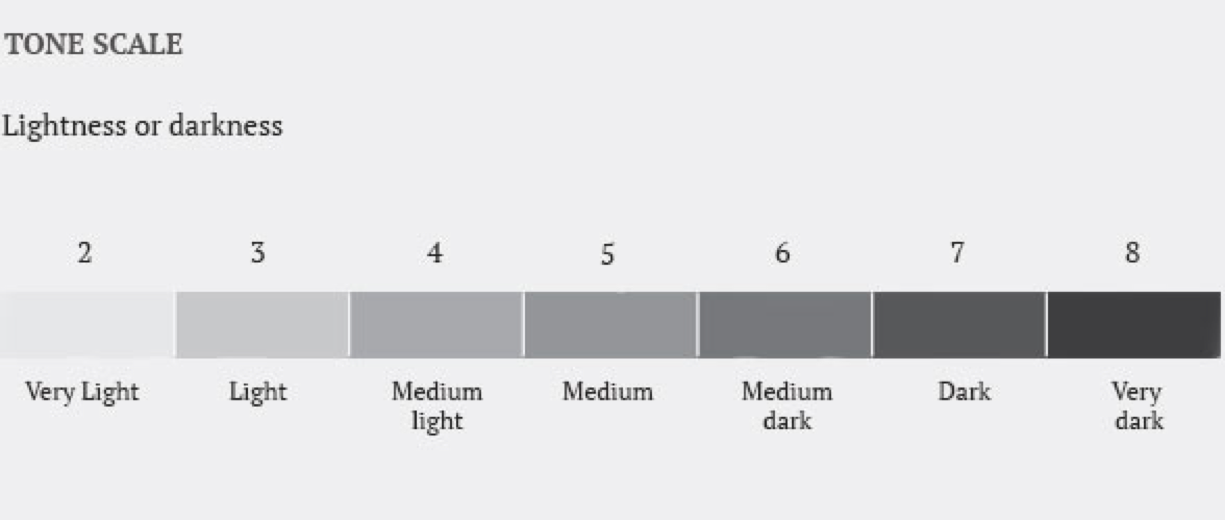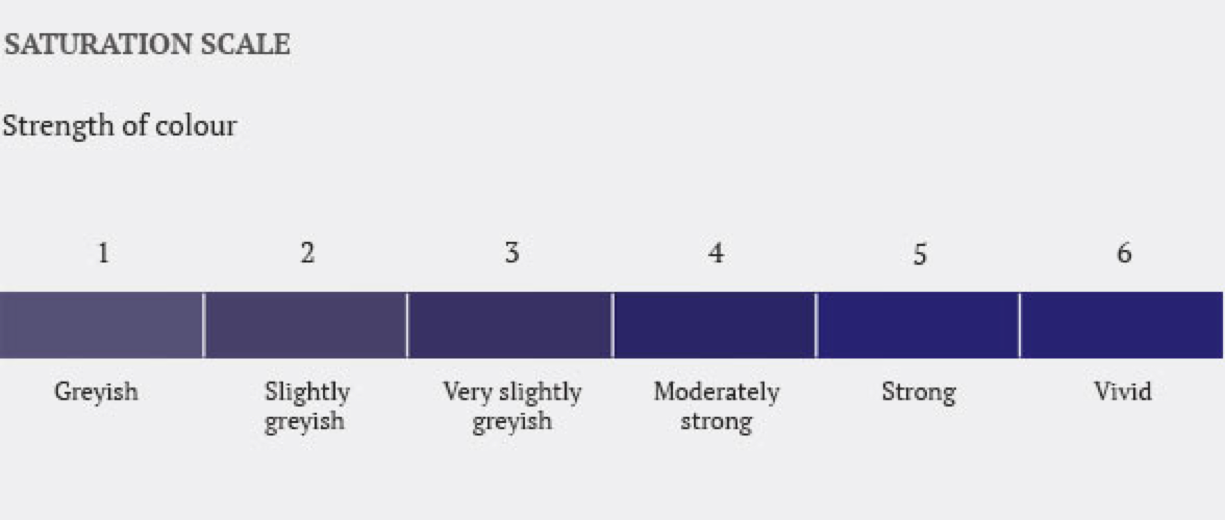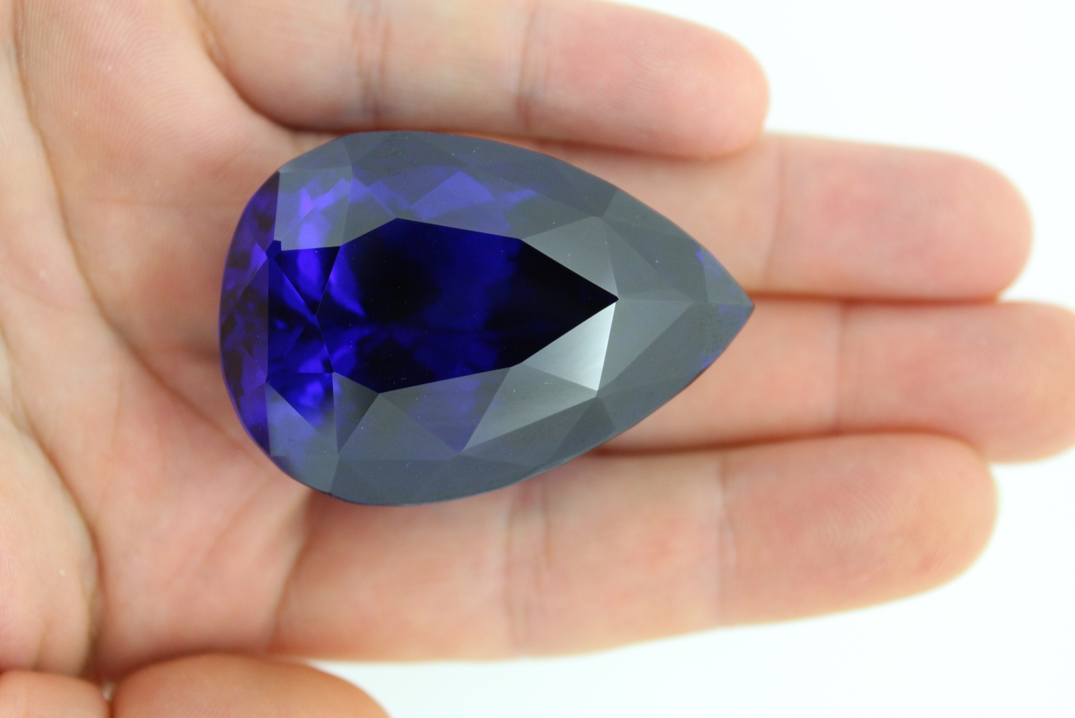When a gemologist grades gemstones using the GIA Colored Stone Grading System, the gemstone’s color is graded using three components: hue + tone + saturation. The article below explains how the grades are given.
1 ) HUE – What color is the tanzanite? Is the tanzanite more blue or violet?
When we use the term “color”, we are actually referring to the Hue, which is the first impression we get when seeing color.
Due to its unique crystal structure, tanzanite is one of only two known gemstones to clearly show two colors at once. As a result, a tanzanite can never be purely blue or purely violet.
- vB “ violetish- Blue” means that the tanzanite’s dominant color is Blue, and the secondary color is Violet.
- bV “blueish Violet” means that the gemstone’s dominant color is Violet.
A tanzanite’s dominant hue is decided by gemologist using white light. If a tanzanite is 51% blue under white light, it will be graded as blue dominant – even if the same stone may change to predominately violet under yellow light as a result of tanzanite’s pleochrism.
2 ) TONE AND SATURATION
Although the concepts of saturation and tone can be illustrated separately, they tend to be inseparable in observation.
Saturation simply means more of a certain color. Tone is the lightness or darkness caused by the saturation of the primary hue and additional hue components from other impurities.
TONE: How dark is the tanzanite ?
Tone is the relative lightness or darkness of a color, with zero being white or colorless, and ten being black. Tanzanite is seen in tones from 2 to 8.

SATURATION: How strong and pure is the color ?
Saturation is the brightness (or purity, intensity) of a hue. The purer the hue, the higher grade it will receive on the saturation scale, which goes from 1 to 6. Lower grades (1 to 3) can have a gray or brown modifier, while in grades above 3 these modifiers are absent.

To better understand the interaction of tone and saturation, consider what happens when blue ink is added to a glass of water. First, you will observe that the hue is not changing – what is changing is the color saturation. That is, the water is getting more of the same color. As more blue ink is added, saturation increases until it reaches its maximum. Until finally, at 100% saturation, the water will have as much color as is possible.
Now imagine the same drops of blue ink being added to highly saturated red water. Notice that the saturation is not changing as it is the same in each instance. Instead, only the tone is growing darker with each additional drop of ink.
Putting it all together:
All three components are then combined to create the overall GIA grade for a tanzanite as follows:
HUE + TONE + SATURATION
An extremely rare and fine tanzanite would carry the grade vB 6/6:
- Hue: violetish-Blue (Blue dominant)
- Tone: 6 (Medium Dark)
- Saturation: 6 (Vivid)
Exceptional, large tanzanites over 30 carats are usually a 7 or 8 on the tone scale – due to their large size. For stones this size, 7 is considered an optimal tone grade.

This enormous and very rare, 274.98 carat tanzanite grades as GIA vB 7/6. violetish Blue, Dark Tone (7) and Strong Saturation (6)
Buyer Beware! You should not expect to find intensely saturated blue tanzanites weighing less than 2.50 carats. The color of a fine, 1.00 carat tanzanite is likely – at its darkest – to be a medium blue or GIA 5/5. Consumers should be wary of online retailers selling smaller stones (between 0.50 to 2.50 carats) as “investment grade” or GIA 6/6.
A final tip for those buying online:
The tone and saturation of a gemstone are very difficult for the untrained person to judge in the flesh, let alone from a photograph. For a customer buying gemstones online, the main concerns are to minimize risk and to receive the stones of the quality and color they’re looking for. The best way to ensure that is to buy from a reputable website that offers expert consultation and an excellent returns policy. If you have a question regarding the color, tone, or saturation of any of the tanzanites we offer, please our gemologist Linda Kennedy will be happy to help you.


